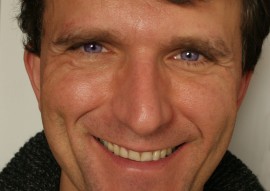 New research is shedding light on how the left analytical and right creative hemispheres of the human brain work together in processing our visual world.
New research is shedding light on how the left analytical and right creative hemispheres of the human brain work together in processing our visual world.
The fascination of how the brain process objective information is not new to the scientific scene. Many TV shows such as Lie to Me and court drama series have been zeroing in on this via micro facial expressions of emotion and body language.
Assistant professor in the Department of Psychological and Brain Sciences at Dartmouth College, Ming Meng has come up with some interesting findings in regards to the brain’s organization of these two categories and the possible role they play in autism.
Meng uses functional magnetic resonance imaging (fMRI), computer vision, and psychophysics to delve into the function of the brain and the processes of our visual world.
EurekaAlert.com commented on Meng and his colleague’s reserach, which was published on January 4th in the Proceedings of Royal Society B (online edition). Meng’s research focused on how the brain is organized to process visual information particularly the human face.
“We needed to study the full spectrum; the stimuli that make an image look like a face but not necessarily a face. These results would show the subtle differences between the left and right side of the brain as they dealt with this range of images.” Meng noted. Looking at how the brain processes faces is Meng’s key to unlocking the mysteries of the left brain/right brain paradigm.
The findings of his study as well as similar studies on the face shed light into the complex world of autism, people with face processing deficits, which also make understanding and recognizing emotions difficult. Meng posits that the reason for social interaction problems especially among autistic children could be a problem with face perception.
“Our results suggest the left side of the brain is processing the external physical input which resolves into a ‘grey scale’ while the right brain is underlying the final decision of whether or not it is a face.”
What are your thoughts on this study? Do you think it is compounding upon new information or just restating old facts?


